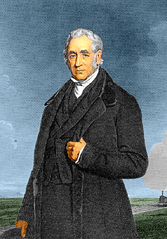Topics > People in History > George Stephenson (1781 - 1848) > Extracts from Biography of George and Robert Stephenson > Wylam in the Late 19th Century - Historical Account
Wylam in the Late 19th Century - Historical Account
Extract from: The Life of George Stephenson and of his son Robert Stephenson, by Samuel Smiles, 1881.
The colliery village of Wylam is situated on the north bank of the Tyne, about eight miles west of Newcastle. The Newcastle and Carlisle Railway runs along the opposite bank; and the traveller by that line sees the usual signs of a colliery in the unsightly pumping-engines surrounded by heaps of ashes, coal-dust, and slag, while a neighbouring iron-furnace in full blast throws out dense smoke and loud jets of steam by day and lurid flames at night. These works form the nucleus of the village, which is almost entirely occupied by coal-miners and iron-furnace-men. The place is remarkable for its large population, but not for its cleanness or neatness as a village; the houses, as in most colliery villages, being the property of the owners or lessees, who employ them in temporarily accommodating the work-people, against whose earnings there is a weekly set-off for house and coals. About the end of last century, the estate of which Wylam forms part belonged to Mr. Blackett, a gentleman of considerable celebrity in coal-mining, then more generally known as the proprietor of the "Globe" newspaper.
Keels on the Tyne < Smiley, 1881 > George Stephenson's Birthpalce

Co-Curate Page
Wylam
- Overview About Wylam Map Street View Wylam is a small village about 10 miles west of Newcastle upon Tyne. It is located in the county of Northumberland. It is …

Co-Curate Page
Wylam Colliery
- "John Blackett (1712-1779) established coal mining and Wylam Colliery in the township in the mid 18th century. The waggonway connecting the colliey to the River Tyne at Lemington was built …


Co-Curate Page
Wylam
- Overview About Wylam Map Street View Wylam is a small village about 10 miles west of Newcastle upon Tyne. It is located in the county of Northumberland. It is …








